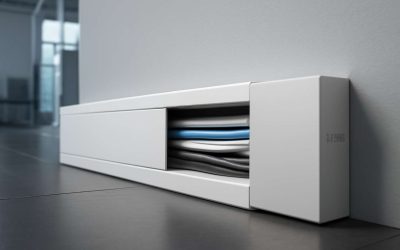
In the network industry, trunking refers to the multiplexing of data from different sources into a single link, which allows each entity to communicate with each other. This is done using various methods such as link aggregation, virtual LAN (VLAN) tagging or bridged mode. VLANs are designed to allow users of the same logical network to share communications resources, eliminating the need for a dedicated link between each individual switch and providing a tremendous amount of bandwidth that can be shared among several entities simultaneously. This is similar to the way a tree trunk carries water to many branches at once versus each branch having its own source of water.
In VLAN tagging, frames from one switch are sent over a trunk line with a tag added to them. The tag contains information identifying the switch, port and VLAN to which each frame belongs. Each switch that receives a tagged frame will look at the tag and determine where the frame should be routed to next. Once the frames reach the destination switch, they’re untagged and the original information is transmitted to its intended recipient. This allows for the efficient use of bandwidth over a wide area, but requires that each device know to which VLAN it belongs.
Before open standards were implemented, each switch maker developed its own VLAN tagging protocol, which is often referred to as Inter-Switch Link (ISL). This encapsulates the frames in a header and trailer that only the specific switch knows how to decipher. This method of communication is not as efficient as open standards, but it is still used to some extent in legacy installations.
Most modern public safety and critical communications systems are trunked using radio technology. This enables fire departments, police and other municipal services to utilize the same spectrum allocated for their respective jurisdictions and share communication resources rather than having their own separate broadcast channels. This reduces the total number of channels needed and allows multiple agencies to operate over a small area without interference or compromising privacy.
A trunked system also enables multiple agencies to monitor the same talkgroup from the dispatch console, and in some cases, the dispatch operator can even ‘patch’ two or more talkgroups together creating a virtual group so that users of different departments can communicate. This also increases efficiency as each user can be on the same channel and not need to switch between different ones, which would require a large amount of time to do.
Most switches have the option of changing the operational mode of a port from an access mode to a trunk mode. This involves a procedure that tells the port to convey VLAN information on every packet/frame. Generally, this is accomplished by enabling a trunking protocol to be run on the switch that modifies Ethernet frames to include the necessary information. The mode is set on the ports using a configuration command, such as mode trunk on Cisco switches.



0 Comments